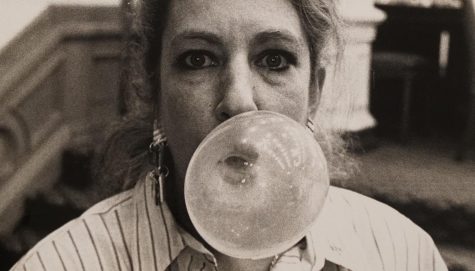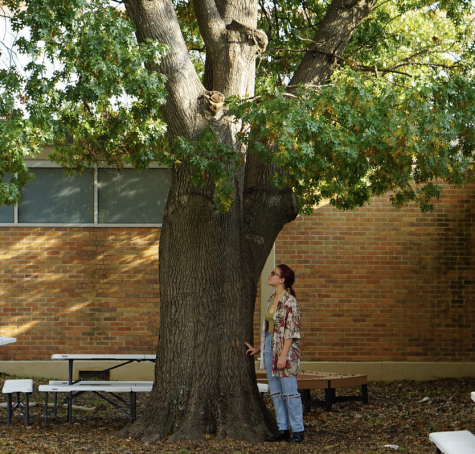Lanie Sepehri — NSPA Writer of the Year Portfolio
Links to online version of the stories in this portfolio
The first story I can remember ever writing may not have been the best quality. Still, it was undoubtedly my most interesting idea: at about 4 years old, I wrote a tale in which an Easter egg delivered bunnies, as opposed to the other way around.
My Easter egg story was the beginning of a long journey with writing that is far from over. Throughout my childhood, I dreamed of being an author and achieving fame and fortune by bringing the stories of nonexistent people to life. It seems since I was little, I have been writing about other people (or, in that case, sentient Easter eggs).
As I got older, however, and especially once I joined my high school newspaper staff, I realized that what I truly wanted to do was write about real people. This year on staff has taught me that I don’t have to go looking in the deep recesses of my brain to find stories that matter. The challenge is making stories of everyday people and their lives stand out.
The thing about people is that they are all different. But we as journalists sometimes tend to go for the obvious story, the one we know will hit the mark. I know I have been guilty of this in the past. It’s easy to write about the star of the school play or the team captain, but that story has been written thousands of times. The question is, what makes that person stand out? What makes this actor different from all the others who have played the same role? Why should I care about this captain when every sport has one? Why are we rooting for these people?
With each story, I wrote I made it my mission to answer these questions. And in the process, I learned that people contain multitudes; what is seen on someone’s surface is rarely, if ever, indicative of what lies beneath.
This year, I have learned being a true writer does not mean writing stories about Easter eggs, although I have continued that same spirit of creativity as I challenge myself to write new stories in new ways. But I have learned that being a true writer is finding the best in people. It is keeping an open mind and always looking for a story where it seems impossible to be found. It, simply put, is what I do best.
From T-ball to team leader
When beginning to write a profile of star baseball player Nathan Nagy, I knew next to nothing about the sport, much less the players. I’m ashamed to say I even looked down on it. But after speaking with Nathan, I learned that he is much more than just a baseball player. He is someone who caught his first ball playing T-ball at 4 years old. He is someone who uses his sport to help children who need it. And he is a leader, someone who cares deeply about his team because of what it has given him. Why do we root for the star athlete? Because he has made it his mission to do for others what his sport has done for him. This story helped me build my ability to bring out someone’s true character and taught me to be more open-minded when approaching new subject matter.
A Starity is born
My writing has also taught me how to make ordinary students stand out. When looking at Mateo Jones, his classmates may know he plays the cello but perhaps not that he is also a talented rapper on the side. Through my reporting and writing, I was able to bring out Mateo’s hidden passion and make his talent shine; his unique interests and personality are reflected in the story.
Families that play together stay together
I’ve always been most comfortable writing feature profiles, but this year I challenged myself to write stories no one else could. I wanted to find the most interesting angle, not just the most obvious one, and zero in on it. When writing about the tennis team’s best player, it would have been simple to focus only on his achievements and athletic ability. But I made this story something more; I turned it into a heartwarming tale of a grandfather coaching his grandson in the sport they both love. This story taught me to look beyond a story’s surface and to capture the human element of something that could otherwise seem impersonal.
A Knight in shining arbor
One of the things I love most about feature writing, and writing and general, is focusing on a single person or story to take a big topic, make it relatable, and, thus, digestible. I wanted to highlight the Environmental Knights, a club dedicated to campus cleanliness and climate activism, in the newspaper. Instead of profiling the club as a whole, however, I chose to specifically spotlight one student: Hazel Johnson, the club’s leader. This choice helped to humanize not only the club but also its mission. This story also helped me break out of my comfort zone after feature writing had begun to feel slightly formulaic. I tried to challenge myself by changing my writing style. For instance, I took an anecdote that may have seemed insignificant and turned it into the lede, which helped the reader connect to Hazel from the get-go and understand why taking care of the environment mattered to her. I tried something new and bettered both the piece and myself as a writer.
Through Reichman’s lens
I also learned how important writing as a craft is as it has the power to impact people beyond words. I wrote a story about Bette Reichman, an eccentric substitute teacher who had an incredible career as a photojournalist. I spent hours interviewing her and the effort and care I put into the story really shows; her vibrant personality pops right off the page. As proud as I am of the writing itself, however, I am beyond proud of the reaction it produced; Ms. Reichman told me how meaningful it was to her over and over and even gifted me a pair of earrings as a thank you. This story showed me why I write: because it means something to people. Because it can change their lives.
NOTE ABOUT THIS PORTFOLIO: Because I am submitting this portfolio in our newspaper account, the links in this portfolio are to the print versions of these five stories. As it may be easier to read the online versions of the stories, they are also provided in the sidebar at left.
Your donation will support the student journalists of McCallum High School. Your contribution will allow us to purchase equipment and cover our annual website hosting costs.





![Junior Mateo Jones performs at Tunnel Vision in July 2022. Performing live provides motivation for Jones. "[Concerts] really got me really interested in making music again," Jones said.](https://macshieldonline.com/wp-content/uploads/2022/11/2022-11-05-475x314.jpeg)
